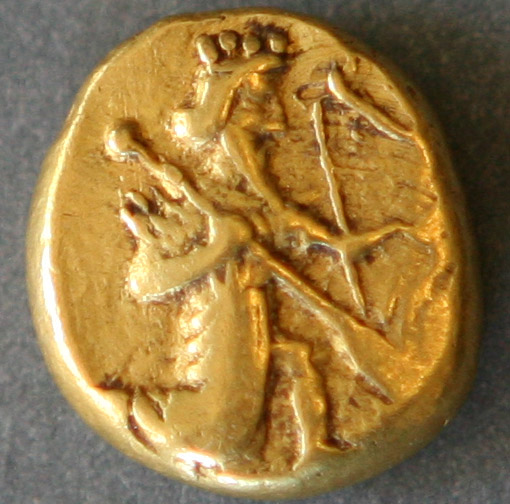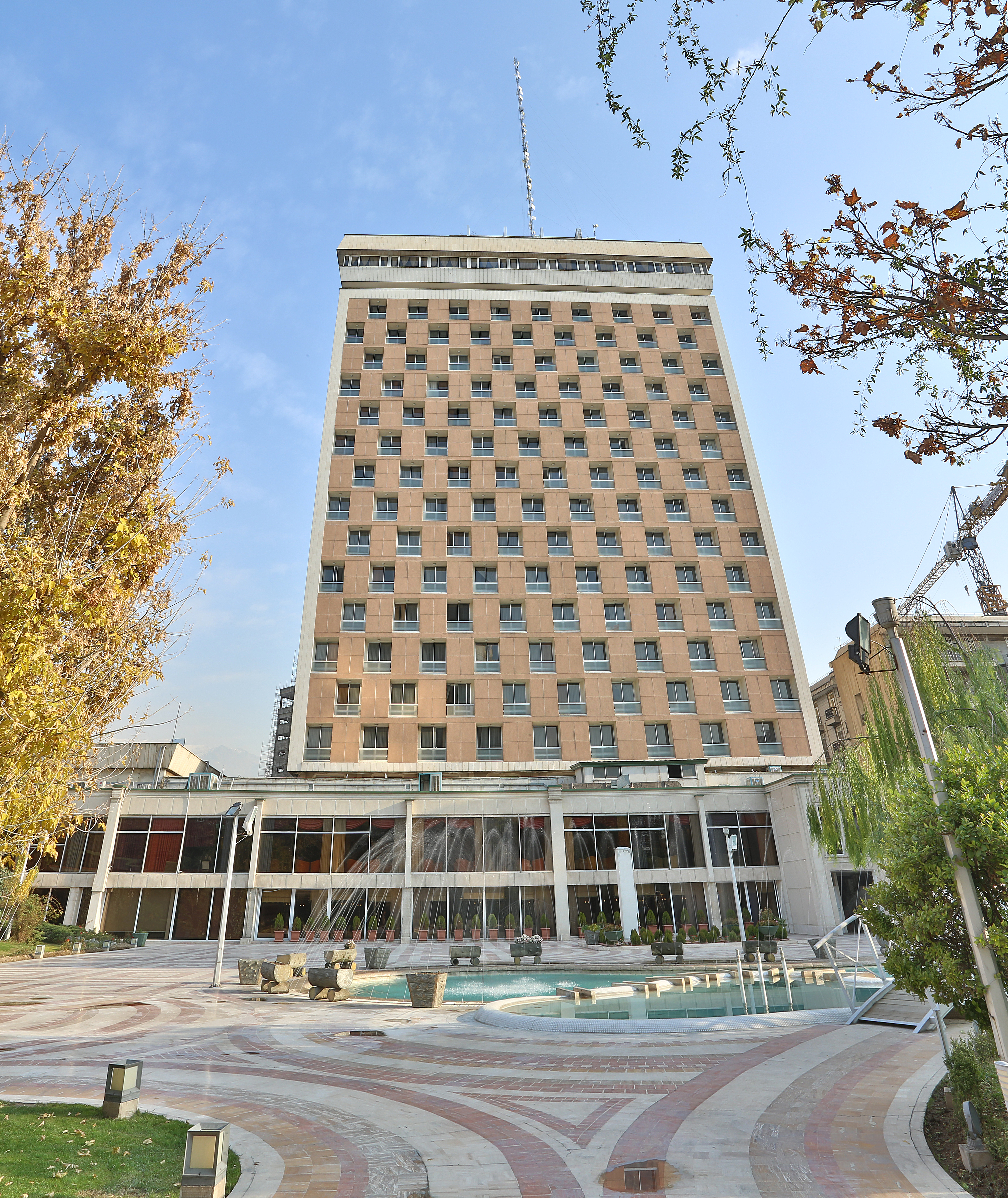|
Social Security Organization (Iran)
The Social Security Organization (SSO) is a social insurance organization in Iran which provides coverage of wage-earners and salaried workers as well as voluntary coverage of self-employed persons. In 1975, the laws Social Security Law was approved and the SSO was established. Iran did not legislate in favor of a universal social protection, but in 1996, the Center for Statistics of Iran estimated that more than 73% of the Iranian population was covered by social security. Membership in the social security system is compulsory for all employees. SSO is a non-governmental organization and it is solely financed by contributions (with the participation of insured (7%), employer (20–23%) and government (3%)). Social protection is extended to the self-employed workers, who voluntarily contribute between 12% and 18% of income depending on the protection sought. Civil servants, the regular military, Law Enforcement Force of the Islamic Republic of Iran, and the Islamic Revolutiona ... [...More Info...] [...Related Items...] OR: [Wikipedia] [Google] [Baidu] |
Islamic Republic Of Iran
Iran, officially the Islamic Republic of Iran, and also called Persia, is a country located in Western Asia. It is bordered by Iraq and Turkey to the west, by Azerbaijan and Armenia to the northwest, by the Caspian Sea and Turkmenistan to the north, by Afghanistan and Pakistan to the east, and by the Gulf of Oman and the Persian Gulf to the south. It covers an area of , making it the List of countries and dependencies by area, 17th-largest country. Iran has a population of 86 million, making it the List of countries and dependencies by population, 17th-most populous country in the world, and the second-largest in the Middle East. Its largest cities, in descending order, are the capital Tehran, Mashhad, Isfahan, Karaj, Shiraz, and Tabriz. The country is home to one of the world's oldest civilizations, beginning with the formation of the Elamite kingdoms in the fourth millennium BC. It was first unified by the Medes, an List of ancient Iranian peoples, ancient Iranian ... [...More Info...] [...Related Items...] OR: [Wikipedia] [Google] [Baidu] |
Islamic Revolutionary Guard Corps
The Islamic Revolutionary Guard Corps (IRGC; fa, سپاه پاسداران انقلاب اسلامی, Sepāh-e Pāsdārān-e Enghelāb-e Eslāmi, lit=Army of Guardians of the Islamic Revolution also Sepāh or Pasdaran for short) is a branch of the Iranian Armed Forces, founded after the Iranian Revolution on 22 April 1979 by order of Ayatollah Ruhollah Khomeini.IISS Military Balance 2006, Routledge for the IISS, London, 2006, p. 187 Whereas the Iranian Army defends Iranian borders and maintains internal order, according to the Iranian constitution, the Revolutionary Guard is intended to protect the country's Islamic republic political system, which supporters believe includes preventing foreign interference and coups by the military or "deviant movements". The IRGC is designated as a terrorist organization by the governments of Bahrain, Saudi Arabia and the United States. As of 2011, the Revolutionary Guards had at least 250,000 military personnel including ground, aerosp ... [...More Info...] [...Related Items...] OR: [Wikipedia] [Google] [Baidu] |
Iran Technical And Vocational Training Organization
The Iran Technical and Vocational Training Organization or in brief I.R.T.V.T.O is one of the organizations affiliated to the Ministry of Cooperatives, Labour, and Social Welfare, which was formed from the merger of three educational institutions in 1980 in order to provide technical and vocational education. In addition to the central headquarters, this organization has 31 general administrations in provinces of Iran, an instructor training center, 552 Learning Center and over 11700 free technical and vocational schools. In order to achieve the latest science and technology news and to comply with international standards, the organization always tried to expand international relations, including with the International Labour Organization (ILO) and the International Organization for Vocational Training in other countries. In this regard, the organization, regardless of the interpretation of the overall organizational structure, carries out its activities only in the field of edu ... [...More Info...] [...Related Items...] OR: [Wikipedia] [Google] [Baidu] |
Taxation In Iran
Taxation in Iran is levied and collected by the Iranian National Tax Administration under the Ministry of Finance and Economic Affairs of the Government of Iran. In 2008, about 55% of the government's budget came from oil and natural gas revenues, the rest from taxes and fees. An estimated 50% of Iran's GDP was exempt from taxes in FY 2004. There are virtually millions of people who do not pay taxes in Iran and hence operate outside the formal economy. The fiscal year begins on March 21 and ends on March 20 of the next year. As part of the Iranian Economic Reform Plan, the government has proposed income tax increases on traders in gold, steel, fabrics and other sectors, prompting several work stoppages by merchants. In 2011, the government announced that during the second phase of the economic reform plan, it aims to increase tax revenues, simplify tax calculation method, introduce double taxation, mechanize tax system, regulate tax exemptions and prevent tax evasion. ... [...More Info...] [...Related Items...] OR: [Wikipedia] [Google] [Baidu] |
Iranian Labor Law
Iranian labor law describes the rules of employment in Iran. As a still developing country, Iran is considerably behind by international standards. It has failed to ratify the two basic Conventions of the International Labour Organization on freedom of association and collective bargaining, and one on abolition of child labor. Countries such as the US and India have also failed to ratify many of these Conventions and a mere 14 other Conventions, only 2 since the Islamic Revolution. The basic sources of Iranian labor law are, * The Constitutions and its amendments (1906, 1907, and 1979) *Civil laws ''"Ghanon Madani"'' *Council of Ministers and Ministry of Labor decrees and procedures ''(Aein Nameh)'' *Judiciary verdicts and cases *Collective bargaining contracts and agreement *Common practices and occupational norms *International Labour Organization (ILO) * ILO Conventions *ILO Recommendations *Other international declarations and agreement History The first constitution ... [...More Info...] [...Related Items...] OR: [Wikipedia] [Google] [Baidu] |
Economy Of Iran
The economy of Iran is a mixed economy with a large state-owned sector and is the largest in the Middle East in terms of nominal GDP. It is the world's 21st largest by purchasing power parity (PPP). Some 60% of Iran's economy is centrally planned."A survey of Iran: Stunted and distorted". ''The Economist'' (2003) It is dominated by oil and gas production, although over 40 industries are directly involved in the Tehran Stock Exchange. The stock exchange has been one of the best performing exchanges in the world over the past decade.Matthew Lynn: Are you brave enough to invest in Iran? ''Wall Street Journal (Market Watch)'', March 26, 2014. Retrieved March 28, 2014. With 10% of the world's [...More Info...] [...Related Items...] OR: [Wikipedia] [Google] [Baidu] |
Bonyad
Bonyads ( fa, بنیاد "Foundation") are charitable trusts in Iran that play a major role in Iran's non-petroleum economy, controlling an estimated 20% of Iran's GDP, and channeling revenues to groups supporting the Islamic Republic. Exempt from taxes, they have been called "bloated", and "a major weakness of Iran's economy". They have also been criticized for reaping "huge subsidies from government", while siphoning off production to the lucrative black market and providing limited and inadequate charity to the poor.Mackey, Sandra ''Iranians, Persia, Islam, and the soul of a nation'', New York: Dutton, c1996 (p.370) Background Monarchy Founded as royal foundations by Shah Mohammad Reza Pahlavi, the original bonyads were criticized for providing a "smokescreen of charity" to patronage, economic control, for-profit wheeling and dealing done with the goal of "keep ngthe Shah in Power." Resembling more a secretive conglomerate than a charitable trust, these bonyads invested h ... [...More Info...] [...Related Items...] OR: [Wikipedia] [Google] [Baidu] |
Homa Hotel Group
Homa Hotel Group is the largest hotel chain in Iran, the hotel is a subsidiary of IranAir and Social Security Organization, which owns a chain of five-star hotels in major cities of Iran. History Homa Hotel was founded by The Shah in hopes of boosting tourism in Iran, it was part of the IranAir Group. it originally had plans on building its own hotels in major Iranian cities. After the Iranian Revolution the hotel group managed to purchase hotels formerly operated by larger foreign hotel chains after having to leave Iran. Overview Homa Hotels has more than 1,000 rooms, all of its hotels were constructed prior to the 1979 Revolution with the exception of the 2nd Mashhad Hotel which is the only Homa Hotel that was built by and for Homa Hotels in the late 1990s. The Hotel has branches in Tehran, Shiraz, Bandar Abbas, 2 in Mashhad, it has had plans on expanding to cities including Isfahan, Tabriz, Chalus, and Kish, however it has recently been more interested in its ... [...More Info...] [...Related Items...] OR: [Wikipedia] [Google] [Baidu] |
Refah Bank
Bank Refah Kargaran, also known as Bank Refah (in fa, بانک رفاه, ''Bank Refah''), is one of Iran's major banks. Bank Refah, with its headquarters in Tehran, Iran, is a retail commercial bank owned and controlled by Social Security Organization of Iran. Bank Refah provides a full range of products and services to more than a million clients. Its SWIFT address is REFAIRTH. History The workers' bank Bank Refah was established in 1960 to provide basic banking services to the Iranian workers. Those services included collection of insurance premiums, payment of salaries and pensions, mortgages and personal loans. Bank Refah was categorized as a non-commercial bank until it was nationalized in 1979 less than a year after the Islamic Revolution. With the Nationalization law passed by the Islamic Majlis of Iran, the bank's ownership was transferred to the government. It was also recategorized as a commercial bank. Ownership In accordance with article 39 of Iran's 1959 fiscal b ... [...More Info...] [...Related Items...] OR: [Wikipedia] [Google] [Baidu] |
Health Care In Iran
''For health issues in Iran see Health in Iran.'' Healthcare in Iran is based on three pillars: the public-governmental system, the private sector, and NGOs. The healthcare and medical sector's market value in Iran was almost US$24 billion in 2002 and is forecast to rise to US$96 billion in 2017. With a population of 80 million (2017), Iran is one of the most populous countries in West Asia. The country faces the common problem of other young demographic nations in the region, which is keeping pace with growth of an already huge demand for various public services. The young population will soon be old enough to start new families, which will boost the population growth rate and subsequently the need for public health infrastructures and services. Total healthcare spending is expected to rise from $24.3 billion in 2008, to $96 billion by 2017, reflecting the increasing demand on medical services. Total health spending was equivalent to 6% of GDP in Iran in 2017. About 90% of Iranian ... [...More Info...] [...Related Items...] OR: [Wikipedia] [Google] [Baidu] |
Law Enforcement Force Of The Islamic Republic Of Iran
, mottotranslated = "Be steadfast witnesses for Allah in equity" ( Heraldry slogan) , formedyear = 1991 , formedmonthday = April 1 , preceding1 = Shahrbani (1913–1991)Gendarmerie (1910–1991)Committee (1979–1991) , employees = ≈600,000 (including conscripts and reserves) , volunteers = ≈35,000 honorary police , budget = , country = Iran , national = Yes , divtype = , divname = , divdab = , subdivtype = , subdivname = , subdivdab = , map = Blank-Map-Iran-With-Water-Bodies.PNG , mapcaption = Map of Iran with province borders , dmap = , sizearea = 1,648,195 km2 , sizepopulation = 86,758,304 (2022) , legaljuris = , governingbody = , governingbodyscnd = , constitution1 Law Enforcement Force Act 1990 , police = Yes , gendarmerie = Yes , religious ... [...More Info...] [...Related Items...] OR: [Wikipedia] [Google] [Baidu] |
.jpg)


